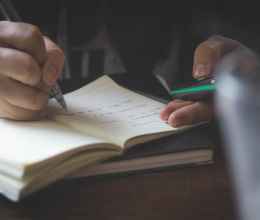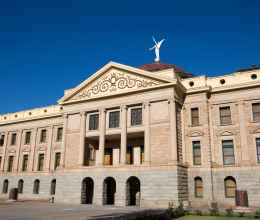Picture this: Someone in an office building lights a candle. Their colleagues get worried - there isn’t supposed to be fire in an office building, it could create bigger problems. Everyone leaves the office out of fear of the flame. They return, five months later, to see the whole building on fire. Their boss, however, mandates that they all must re-enter the building. Startled by such a suggestion, the employees question why they are being asked to be put at risk, to which the boss replies, “it costs more money to keep you alive out here than to put your life at risk in the burning building.”
This is the problem that many students, faculty, and teachers are facing in Arizona right now due to the lack of direction given by Governor Doug Ducey.
As the state began hearing about reports of COVID-19 cases in early March, my peers and I were just returning from Spring Break. We were preparing for the SAT and worrying about which summer jobs would make our college applications stand out. We never would have imagined that our biggest problem going into our senior year would be that our schools would be struggling to figure out a way to reopen during a pandemic.
Governor Ducey has repeatedly stated that his approach to this public health crisis will be informed by public health experts but actions speak louder than words. The health and safety of my generation - and of my teachers - should not be dependent upon election politics.
While I agree that we should get back to learning, school reopening must happen carefully and safely. We know that for many students, school is a safe place. A place where they can interact with friends, have nutritional meals, have reliable access to the internet and be their authentic selves.
But as we look at reopening schools, we must also think about students with disabilities or special education needs. What is being done to accommodate my peers that need captioning, brail, or other arrangements? Many are not getting the resources that they need in order to gain the education they are entitled to. If distance learning fails to equip them with the necessary resources, or does not allow for the return of these students to a safe environment with educational professionals, disability discrimination within education will go unchecked.
The safety and wellbeing of my friends and teachers is at stake. It is imperative that schools follow proper procedures recommended by health experts. Schools must ensure that physical distance is maintained within classroom settings, encourage wearing a face mask, promote hygiene, and limit the number of students and staff present.
However, discrimination within distance learning is not limited to those with disabilities. Economic disparities will lead to barriers within education if the proper resources are not provided by schools. Funding for educational electronic devices can be taken out of the budgets of programs that will be halted due to the pandemic, such as contact sports or on campus clubs. Every single student needs to have reliable access to their own educational electronic device. Many families are struggling right now - that last thing parents need to worry about is the economic burden of distance learning, and students should not be punished in their educational efforts because of the inability to pay for expensive technology.
COVID-19 disproportionately impacts low income families and communities of color. Because of this, families who were already disadvantaged due to systemic racism and discrimination are at further risk for intergenerational health and economic disparities.
We know that extended school closures are harmful to students. Our mental health has taken a toll. Students have had to cancel major life moments like high graduations. I miss my friends and teachers but ultimately, schools and education must go on in a manner that is fair, safe, and accessible to all, no matter that format.


